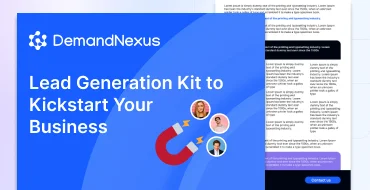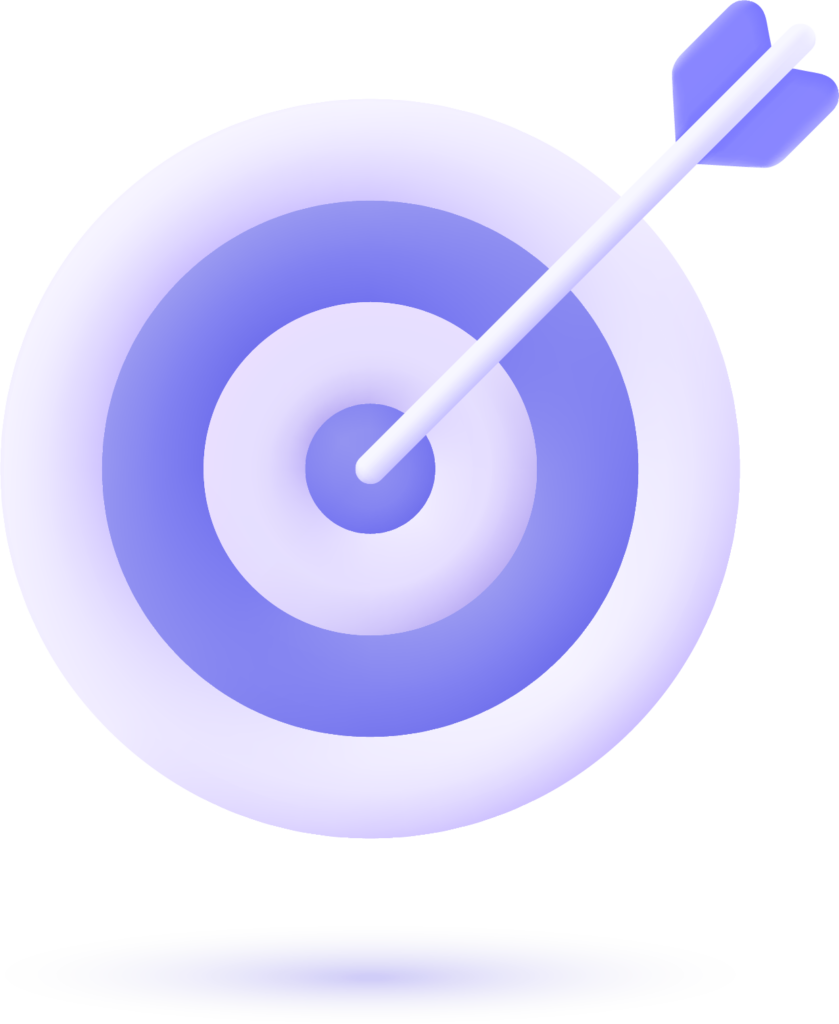In today’s fast-paced digital world, competition is tough, and businesses are under a lot of pressure to get the most out of every marketing dollar. When consumer expectations change so quickly, traditional campaign planning just doesn’t work anymore. That’s when intent-based marketing comes in. This new way of doing things is quickly becoming popular because it helps brands learn more about their customers and send them messages that are very relevant in real time, which leads to more engagement and more sales.
But intent-based marketing isn’t just a fad; it’s a big change in how businesses reach out to potential customers. This strategy doesn’t look at things that don’t change, like age or location. Instead, it looks at what people are doing online right now. That means more useful content, better targeting, and in the end, better results.
What is marketing based on intent?
Intent-based marketing is all about looking at how people act online, such as what they search for, what pages they visit, and how long they spend on certain content, to find signs that they are ready to buy. These insights help marketers figure out where a person is in the process of buying something.
Demographic targeting is based on things like age or region that you know about your customer. Intent data, on the other hand, shows you what they are currently interested in. This makes it possible to send messages that are more timely and personal, which is more effective.
You can do the following with intent-based marketing:
- Find leads who are already interested and worth a lot of money
- Change your messages based on where people are in the buying process.
- Spend your advertising money more wisely by only going where there is clear demand.
Getting it Intent: Active vs. Passive
There are two main types of intent signals, and not all of them are equally important:
- Active Intent: This is when someone shows direct interest in a product or service, like when they search for “best laptops under $1,000” or compare product features online. These people are almost ready to buy something.
- Passive Intent: This is more general and less urgent. For example, someone might be looking at “home office ideas” or reading about tech upgrades without any plans to buy anything right away. They are still in the early stages of their research, but with the right care, they could become valuable leads later.
You can tailor your messaging to the type of signal you’re working with. For example, you can give passive browsers educational resources and strong calls to action to active buyers who are ready to buy.
For what reason now? Why Intent Data is Important Right Now
Customers today want brands to know them, not just by name but also by what they need. More than 70% of people expect personalised offers when they go to websites, and 62% say they will stop buying from brands that don’t meet those expectations.
Intent data fills this gap perfectly because it connects communication with what users are actually doing right now, instead of just making guesses based on past actions or demographics.
The main benefits of strategies based on intent
| Benefit | Explanation |
|---|---|
| Get more return on your ad spending | Instead of casting a wide nett and hoping something sticks, you can focus on people who have already shown interest. This cuts down on waste and increases conversions. |
| Better personalisation | You can give people content that speaks to them directly, whether they are new visitors or loyal customers coming back for more, when you know exactly what they want or are thinking about. |
| More seamless customer journeys | You keep prospects interested without overwhelming them by giving them useful information at every stage, from discovery to decision. |
| Better use of your budget | Intent signals help teams figure out which leads are most important right now, so they don’t waste time chasing after cold prospects. |
| Better results in SEO | Behavioural insights also help with content creation strategies. Knowing what topics get the most attention can help you get better organic rankings and bring in qualified traffic. |
Uses in the real world: How Brands Use Intent Data on a Daily Basis
- Targeted Digital Ads: Advertisers can use platforms like Google Ads to show people ads that are based on their recent searches or website visits. For example, if someone looks at electric bikes on another site, they might see e-bike deals.
- Personalised Website Experiences: Websites change in real time based on how you use them. For example, if you’re looking for tropical getaways, a travel site might show you beach resorts. If you prefer winter destinations, it might show you ski packages.
- Social Media Posts and Email Campaigns: If someone leaves their cart in the middle of a purchase, send them an automated email reminder, maybe with a special discount code. Social media sites also use browsing history to show sponsored posts that are likely to be in line with what you’re currently interested in.
- Retargeting campaigns that work smarter, not harder: Retargeting brings back potential buyers who didn’t buy the first time—think follow-up ads with glowing reviews after someone looks at a product page but doesn’t buy it.
How to Use User Intent to Make a Good Strategy
- Plan out your buyer’s journey: Make it clear what the steps are: awareness, interest, consideration, evaluation, and decision. To know exactly where users stand, match common actions (like searches) with each one.
- Segment Based on Behaviour: Use CRM tools and lead scoring systems to group people by what they do, not by what you think they might do. This makes outreach much more focused and useful!
- Match the content to each stage:
- Content for the top of the funnel includes how-to videos, educational blog posts, and articles that explain things.
- Whitepapers, case studies, and comparison guides are all examples of mid-funnel assets.
- Offers at the bottom of the funnel include product demos, pricing information, and reviews.
- Check out what your competitors are doing to reach people at different stages, but aim higher! Use gaps and weaknesses as chances to stand out, and get new ideas from how your own audience behaves.
- Keep getting better by testing and analysing: Behaviour is always changing, so it’s important to keep optimising. Keep a close eye on performance metrics, run A/B tests on offers often, and change your segmentation as new trends come up.
Things That Help Make It Happen
- Platforms for CRM: Help organise contacts into behavior-based groups so that messages feel more personal and less generic.
- Systems for Automating Marketing: Automatically start trigger sequences based on what the user does, like opening emails or clicking links.
- Ad Networks: Serve dynamic ad creatives that are based on recent interactions.
- Analytics Platforms: Keep an eye on how engaged people are at all touchpoints so that nothing goes unnoticed.
Mailchimp’s automation features are great examples. They let businesses create full customer journeys based on real-time activity, including personalised emails that use first names and past purchases.
Things to Keep an Eye On
- Data Accuracy is Key: Bad information leads to mistakes, not smart campaigns. Whenever you can, stick with sources that have been checked.
- Integration Can Be Hard: It’s not always easy to combine behavioural data with existing CRMs, but unified platforms make things a lot easier.
- Follow the rules about privacy: Being open is very important here! Always be clear about how you use data and follow rules like GDPR and CCPA.
- Not all technology is cheap: Advanced personalisation tools can be expensive, but the returns usually make the investment worth it once they are set up correctly.
Final Thoughts on How to Make It Work for a Long Time
At its core, intention-driven marketing helps brands connect with customers in a direct and meaningful way, no matter where they are in their journey, whether it’s in their heads or online.
If you’re a startup with limited resources or a big company that is growing quickly, being able to act quickly based on real-time behavioural cues gives you a big advantage over competitors who only use old methods.
Are you ready to act?
Come see us today at DemandNexus.io to learn more about B2B lead generation, smart sales automation, account-based marketing, sales prospecting techniques, and B2B marketing metrics.



